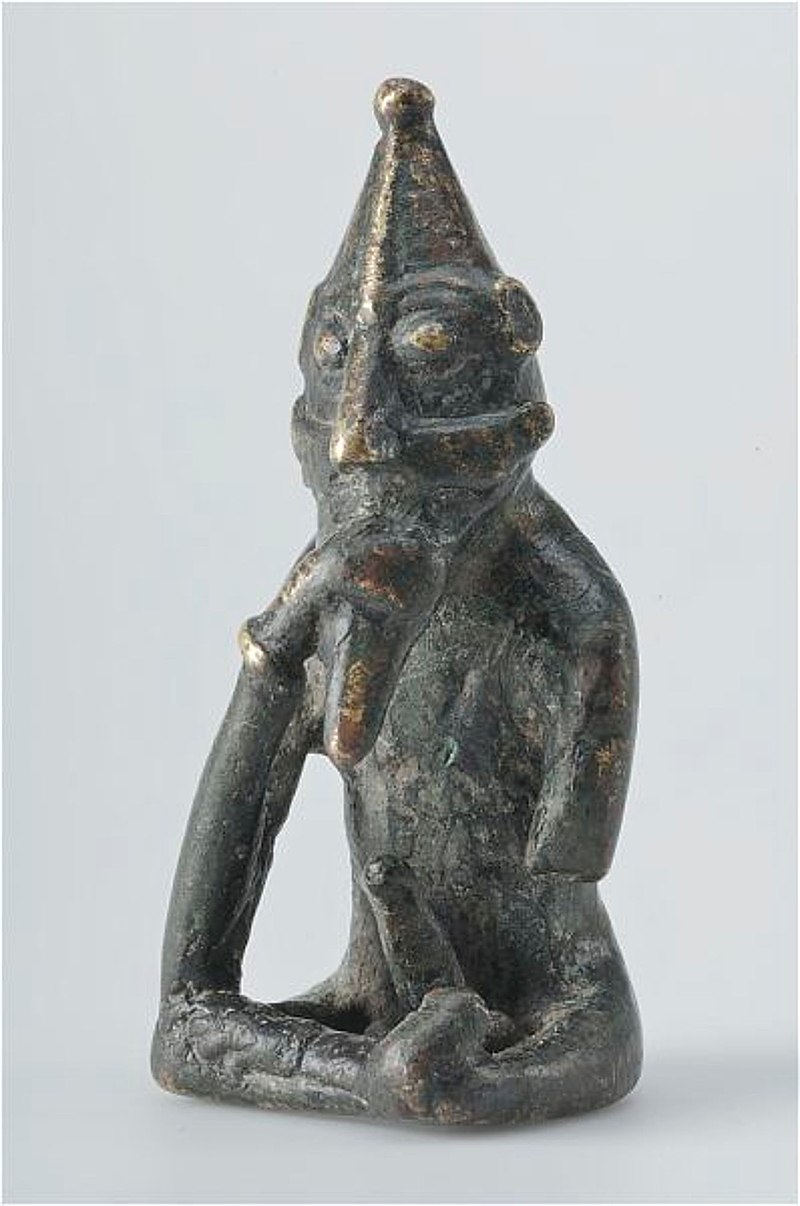Over the past few posts, we’ve been in a bit of a transition, leaving Proto-Indo-European proper behind, and focusing increasingly on the ‘European dialects’, setting the stage for the emergence of a distinct variety of Indo-European that will become Germanic. But before leaving Indo-European altogether, there are a couple of loose ends I want to tie up, dealing with more abstract points of language-culture contact, and both tying in in their own way to the separate development of Germanic.
The first of these is religion. We don’t know a lot of details about the religious practices of early Indo-European speakers, including basic things like how much variation there was. It is probably a mistake to talk about ‘Proto-Indo-European religion’ as some monolithic thing. But the general type of religious practice seems clear enough. Most of this is based not on linguistic data, but instead comes from comparing the portrayals of religion in sources in Classical Greek, Vedic Sanskrit, Hittite, Old Norse, and various other early Indo-European languages, but is nonetheless a traditional preoccupation of Indo-European studies more broadly.

Two gods.
The most important thing about early Indo-European religions is that they were not based on belief: they were not ‘faiths’ or ‘creeds’. They seem to have involved the assumption that there were a number of gods and spirits, but the important thing wasn’t really belief in them as such, but rather performing ritual sacrifices and libations in the proper manner. There was probably an element of quid-pro-quo: humans offered a type of payment (‘sacrifice’) to the gods, and in return the gods would protect or help the sacrificers. But there was probably also an element of obligation, since a deity that was not properly given their due could bring calamity to humans. In some traditions, all this was also meant to help sustain ritual order in the world at large, and it’s possible that this idea was also found among speakers of Proto-Indo-European.
‘Sacrifice’ can be a difficult concept for some of us, particularly given the strongly negative connotations the word can have (seriously, do an image search online for ‘sacrifice’ and see what comes up). Basically, a sacrifice is just anything dedicated to a god. This can range from classic things like wine or ghee (clarified butter), to the dedication of slaughtered animals (though in many traditions, these animals would then be eaten by humans), to the placement of objects in sacred places. In some times and places, capital punishment seems to have involved dedicating the victim to a god, which would be a form of human sacrifice – but this is a topic I won’t get into any further.
 A modern yajna, a type of Hindu sacrifice in which things like ghee are put in a ceremonial fire.
A modern yajna, a type of Hindu sacrifice in which things like ghee are put in a ceremonial fire.
(But do note that Hinduism has changed a great deal from the type of religion reflected in the Vedas.)
Whatever was being sacrificed, the act of dedicating things to gods tended to be ritualized, accompanied by hymns or songs and potentially involving set procedures, tools, and spaces. Many of the earliest texts in Indo-European languages are in fact related to sacrifices and rituals: a substantial portion of the Hittite corpus are instructions for rituals, and the Rigveda is a collection of hymns, usually dedicated to some deity or other. I should also emphasize that, despite some broad-broash similarities, the exact details of what was sacrificed and how the rituals were performed vary quite a lot.
From a modern perspective, it’s the gods that probably loom largest in our conception of ‘religion’. They were certainly not unimportant in early Indo-European religions, though it’s interesting that specific deities seem to come and go with a certain ease in most of the traditions. One of the relatively few for whom we can actually reconstruct a secure Proto-Indo-European name or title is ‘Father Sky’, or *djḗus ph₂tḗr. This is found as the name of a somewhat marginal god in the Vedic hymns (as pitā dyāuḥ; this collocation is found as such in the Rigveda, book 1, hymn 89, stanza 4), but is maybe more familiar as the central figure in Greek tradition: Zeus, or patḗr Zeús. Zeus is often directly addressed in invocations in the vocative form Zeũ Páter (e.g. Iliad, book 1, line 503), and this direct vocative form is also the basis for the Roman Jupiter, from Latin Iū-piter, treated as a compound word from vocative *djeu-pater. Hittite also uses a form of this word, šīuš, to just mean ‘god’ in general. In all of these, the *djeu- element originally meant ‘sky’, and the *ph₂ter- part ‘father’.
This *djeu- was not only adopted as the name of this particular god, but served as the basis for one of the most common Indo-European words for ‘god’ in general, *deiw-ós. This was a derivative form, made partly through ablaut (prompting typical interchanges of *i and *j, and of *u and *w, as discussed in this post), partly through accent shift, and partly through adding a suffix. This process also changed the word’s meaning: the new derivative word meant ‘something related to X’, or sometimes ‘child or descendent of X’. In this case, taking a base word ‘sky’ or ‘Father Sky’ made the new word *deiw-ós mean either ‘skyling, celestial being’, or else ‘children of Father Sky’ – either way, general sense is ‘god’, and it’s widely found in Common Indo-European, from Latin deus to Sanskrit dēváḥ to Lithuanian dievas and beyond.
 The kind of derivation that takes *djéu- and forms *deiwó- is called vr̥ddhi-derivation.
The kind of derivation that takes *djéu- and forms *deiwó- is called vr̥ddhi-derivation.
Vr̥ddhi is a Sanskrit term meaning ‘growth’, and was adopted for general use for this process because the process was exceptionally common in Old Indic, and because Sanskrit the grammarian Pāṇini had assigned this term to it over two millennia ago.
This is also where Tuesday comes in. Let’s pause for a moment to work backwards from the modern word, which has been common through the written history of English during the past thirteen or so centuries. The earliest written forms of this word are in Old English, where we find Tiwesdæg, which is a meaningful compound word: ‘the day of Tīw’. Tīw is a god worshipped by speakers of Old English before their general conversion to Christianity. He’s not mentioned much in Old English writings, but he was, once upon a time, apparently equated with the Roman god Mars, which is what led to the creation of Tiwesdæg.
At some point (before their conversion to Christianity), Germanic-speaking peoples tended to adopt the Roman system of naming days of the week after deities: Mars’s day (Martis diēs in Latin), Mercury’s day, Jupiter’s (Jove’s) day, Venus’s day, etc. But the names weren’t just borrowed as such, they were translated, using what were felt to be the closest equivalent deities at the time (which are not always what modern stereotypes would predict). So instead of Mars, Mercury, Jupiter, and Venus, they went with various forms derived from *Tīwaz, *Wōdanaz, *Þunraz, and *Frijjō – whence the modern day-name-elements Tue-, Wedne-, Thur-, and Fri-.
Most of what we know, or think we know, about Tīw comes from writings in another old Germanic language, Old Norse, where there happen to have been medieval Christian scholars who wrote a good deal about non-Christian mythology. (They did this mainly in order to understand and explain mythological allusions in poetry.) Here we have some descriptions of a god named Týr – not a terribly prominent deity on the whole, though we do have one rather memorable story about him. The gods were trying to chain the cosmically monstrous wolf Fenrir, and had made a miraculous chain for the purpose. The problem was how to get the chain on the wolf:
It is one proof of [Týr’s] bravery that when the gods were luring the wolf Fenrir so as to get the fetter on him, he did not trust that they would let him go, until they placed Týr’s hand in the wolf’s mouth as a pledge. And when the gods refused to let him go, then he bit off the hand... (Adapted from Faulkes’s translation of the Prose Edda.)
Old English Tīw, Norse Týr, and related names all come from a Proto-Germanic word *tīwaz. This was not just the name of one particular deity, but could mean ‘god’ in general (this double sense is still found in Old Norse). This kind of shift is not really that strange: a prominent deity is referred to by some title, such as ‘the lord’ or ‘the god’, and this is then reinterpreted as a proper name.
So, working backwards we’ve gotten from Tuesday to the Proto-Germanic word *tīwaz ‘god’. As you can probably guess, *tīwaz comes from Indo-European *deiwós – I won’t get into all the sound changes, except to say that they’re all perfectly regular (including, of course, Grimm’s Law). This kind of entity was, it seems, the object of sacrifices from early Indo-European times down to the conversions of various Germanic-speaking peoples to Christianity. It is of course very possible that this is also a point of continuity within Europe: many non-Indo-European-speaking peoples have very similar kinds of sacrificial polytheism, and it seems likely enough that when the Indo-European languages spread into Europe, the religious practices on both sides were not fundamentally dissimilar.
It’s even sometimes suggested that some specific deities or traditions of non-Indo-European origin were taken up into Norse religion. According to the surviving sources, Týr belonged to one sub-pantheon of gods known as the Æsir. These coexisted with another sub-pantheon called the Vanir, and it’s been suggested (though we’ll never really know) that this situation reflects older contact between two different sets of gods: the Æsir reflect (more or less) the gods brought in by Indo-European speakers, while the Vanir gods with a longer history in Europe, with the two sets coming to be understood as two families of gods, both acknowledged as extremely important and central to Norse religious practice.
 Frey (Freyr) is, along with his sister Freyja, one of the most... prominent of the Vanir.
Frey (Freyr) is, along with his sister Freyja, one of the most... prominent of the Vanir.
Such reconstructions should be taken with a grain of salt, of course. There are other ways the two families of deities could have come about, and we should bear in mind that the actual names of the Æsir, such as Odin (Óðinn), Thor (Þórr), and Baldr, do not come from Indo-European deity names. (The names may come from Indo-European roots, but they were not used as god-names in Common Indo-European.)
All in all, this post hits what I consider to be the outer limits linguistic-cultural reconstruction. It’s certainly the case that many aspects of culture are reflected in the vocabulary, and the past few posts have touched on various ways that linguistic reconstruction can shed light on cultural history. It’s often complicated enough to do this sort of thing, even in fairly concrete and constrained areas like technology. The more we move into areas like religion, which can be difficult to get a grip on even in contexts where we have good direct evidence, the question marks start to fly fast and furious. Words like *deiwós give something of an anchor, pointing to the place of the deity in the sacrificial polytheism that was probably the norm for most earlier Indo-European speaking peoples. But the further details, such as just who the gods were, what myths were told about them, how they were sacrificed to in detail, and how these things changed (or didn’t change) as the Indo-European languages were spread so very far and wide – all these things tend to be varying degrees of murky.
And with that, I’ll bid you all a happy Tuesday, and retreat in the next post to the slightly safer waters of poetry.
Further Reading
There’s a good deal written in ‘Indo-European religion’ – a simple overview is chapter 5 of Mallory’s In Search of the Indo-Europeans, a book I’ve recommended before. In fact quite a few things I’ve mentioned in previous posts, particularly this one, have a good deal to say on religion, in particular the works by Benveniste, Mallory & Adams, and Gamkrelidze & Ivanov.
For Germanic religion specifically, there’s also a lot written. A particularly good book, though one that’s unfortunately not easy to get your hands on, is Turville-Petre’s Myth and Religion of the North: The Religion of Ancient Scandinavia, which is particularly good about quoting from the relevant sources. For an excellent shorter overview, I’d recommend Rudolf Simek’s essay ‘Germanic Religion and the Conversion to Christianity’, which explains a lot of the problems involved in studying prehistoric religions. Simek also has a number of handy books on the subject. For the days of the week in Germanic, try chapter 13 of D. H. Green's Language and History in the Early Germanic World (a book which also has some very good material on religion in general).
There are of course dozens, if not hundreds, of books and other media retelling Norse (or Greek) myths, some of which are very good, but mythology is only one part of religion, and probably the least difficult one for us to get our heads around these days.
On *djḗus and *deiwós specifically, I should mention that there is one school of thought that would see these as originally two case-forms of the same word, rather than an example of deriving one word from another. Obviously this isn't a view I'm persuaded by, but it's worth mentioning.
And one final note: a lot of people assume, naturally enough, that Latin deus 'god' is related to Greek theós, of the same meaning (compare deity and theology, for example). This is, however, a case of false friends. While deus is from *deiiwós, and is part of the word-family discussed in this group, theós in totally unrelated, from a completely different root (it is more likely related to words like fest, originally a holy day).





